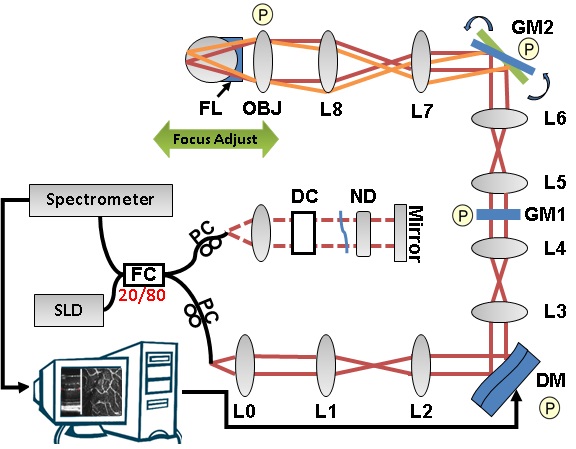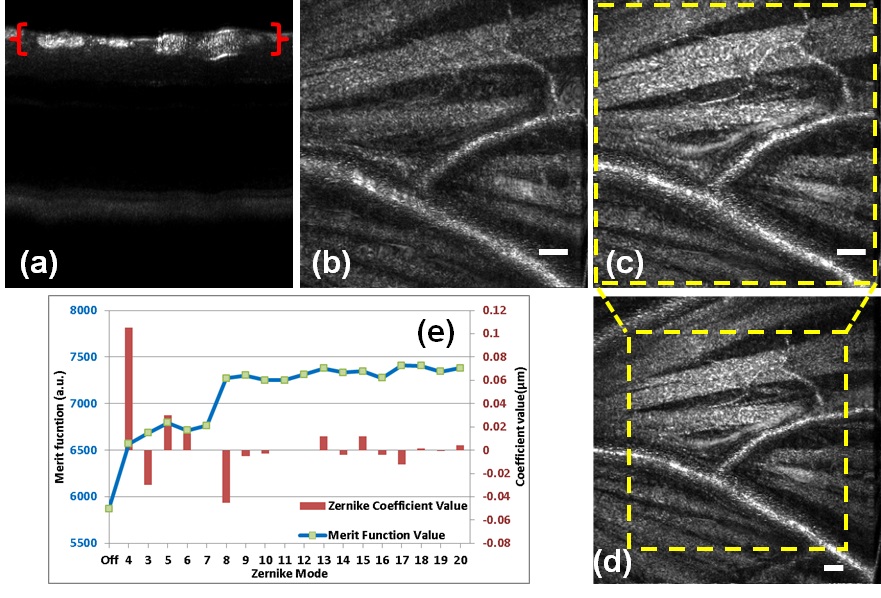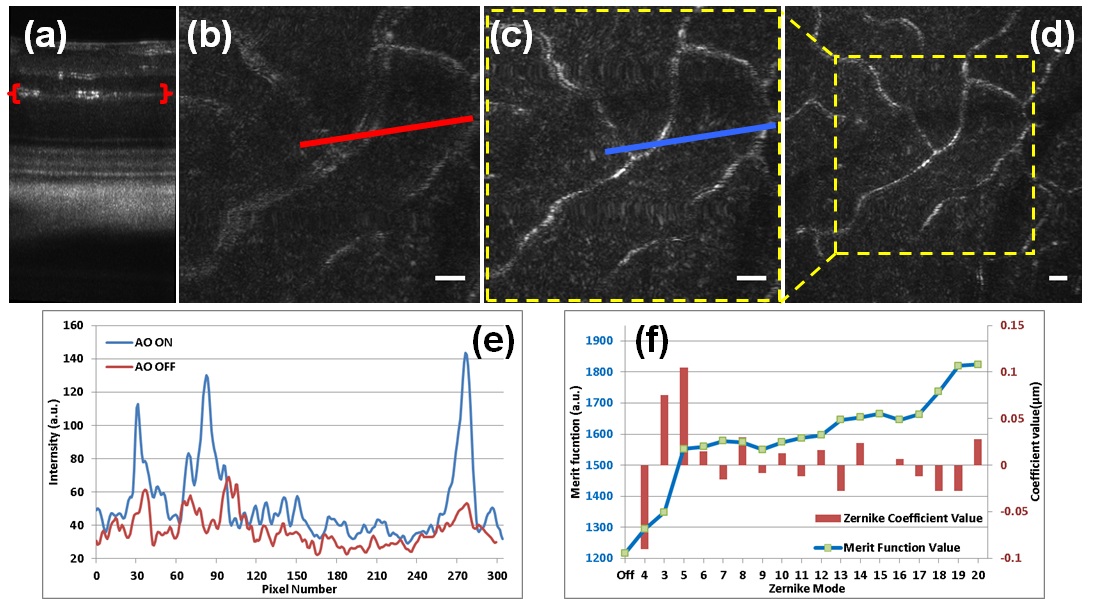Wavefront sensorless adaptive optics optical coherence tomography for in vivo retinal imaging in mice
We present wavefront sensorless adaptive optics (WSAO) Fourier domain optical coherence tomography (FD-OCT) for in vivo small animal retinal imaging. WSAO is attractive especially for mouse retinal imaging because it simplifies optical design and eliminates the need for wavefront sensing, which is difficult in the small animal eye. GPU accelerated processing of the OCT data permitted real-time extraction of image quality metrics (intensity) for arbitrarily selected retinal layers to be optimized. Modal control of a commercially available segmented deformable mirror (IrisAO Inc.) provided rapid convergence using a sequential search algorithm. Image quality improvements with WSAO OCT are presented for both pigmented and albino mouse retinal data, acquired in vivo.
Corresponding information:
Please send an e-mail to yjian@sfu.ca for more information.
Figures and Videos
Reference
Y. Jian, J. Xu, M.A. Gradowski, S. Bonora, R.J. Zawadzki, and M.V. Sarunic. "Wavefront sensorless adaptive optics optical coherence tomography for in vivo retinal imaging in mice." Biomedical Optics Express 5, no. 2 (2014): 547-559.



